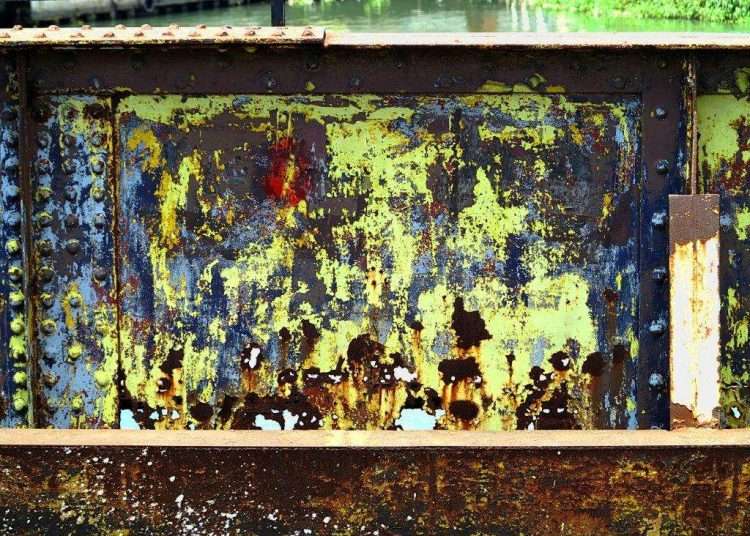Ursula Holzwarth was born in Göppingen, Baden Württemberg, Germany. She has been a photographic laboratory worker and a promotional and stage show photographer. Between 1969 and 2006 she worked as an editor of films, newsreels and documentaries on Stuttgart television. She has studied the Ta Ke TI Na rhythm and Korean percussion. In addition, she received numerous plastic art courses.
Her vital curiosity and her energy have no limits. She undertakes each day with contagious enthusiasm. Her life, not exempt from dramas like all normal lives, is a perennial celebration.
In 2002 she traveled to Havana for the first time, a fact that, according to her words, changed her life.
Tell us how you got started in photography and what is your link with Cuba.
The first time I had a camera in my hands was at the age of 8, on a school excursion; there I took my first shots. This was followed by a Kodak Retina, my partner for many years.
At that time, my photographic motives were limited to family, friends and school excursions.
I don’t remember what triggered it, what I do remember well is that when I was about 17 years old, I told my father: I’m going to be a photographer! Nothing and no one could get the idea out of my head.
Back then, women had little hope of getting decent jobs. But I was lucky and was able to access a professional training as a photographer in the advertising department of WMF, a manufacturer of kitchenware.
There we enjoyed a lot of flexibility in terms of time. So one day the idea of taking pictures at the Stuttgart Theater occurred to me.
The first test was in the dress rehearsal for the world premiere of the opera Antigone, with music by Carl Orff. I was immediately captivated by the music, fascinated by the role of Antigone and I came together with the character while photographing.
I had never experienced such deep and moving emotions before, so I became addicted to dress rehearsals for theater, opera, and ballet. A new world had opened up before my eyes.
Soon after, I went to work in television and became an editor. I worked there for 38 years. I preferred documentaries, because what interested me was reaching people and taking a look behind the stories they told.
Already retired, I accidentally became a mentor to Claudia Fernández, a Cuban media student in Stuttgart. We became friends immediately. She invited me to visit her in Havana, after her return to her native land. The first visit was followed by others, in which, first, I used to tour the city without a camera, from Vedado towards the Malecón and then to Old Havana, through its streets and alleys. That was how I got to know the city, that strange world for me, and I started absorbing all the impressions I could capture.
Havana won me over. It made me feel the same emotions that I had experienced with Antigone. So whenever I visited, it was clear that I would return.
With her friends and her day to day, Claudia revealed the Cuban world to me and fulfilled some of my wishes, which the city had awakened in me. They found me a conga drum teacher who introduced me to Cuban rhythms. At the Vía Danza school I started taking dance lessons; I also had a Spanish dance teacher.…
I began to take my creativity to abstract painting, in which I was interested in structures and the search for suitable motifs. Havana is the ideal place for it: the city walls are an inexhaustible source, as long as you are willing to appreciate them. From that moment on, my camera accompanied me on excursions around the city and I began to photograph everything that I had discovered without the camera.
My colleagues were fascinated by my observations and the idea of making a book on the subject soon arose.
With the new project underway, Mirta Peralta, a Cuban living in Stuttgart, entered the game and introduced me to Cuban art and literature, topics that she had studied in her country. Ángel Augier’s book Poesía de la ciudad de La Habana was an inexhaustible source for us.
I called the book, not yet published, The Invisible Painter of Havana. It is a compilation of my photographs of the city in which each photo is accompanied by a text by a Cuban poet.
Over the years, another project emerged, which consists of presenting my photos on canvas, and then enlarging them with abstract painting. The works can be seen on two blogs: habanainvisible.wordpress.com, havannaulla.wordpress.com
Havana has enriched my life in many ways. When I do something I’m passionate about, I devote myself completely.
My photos are snapshots, moments; far from claiming to be perfect, they emphasize the essential. When I want to capture a subject, I discreetly take the camera out of my fanny pack, in the same way that I go around the city, as discreetly as possible.
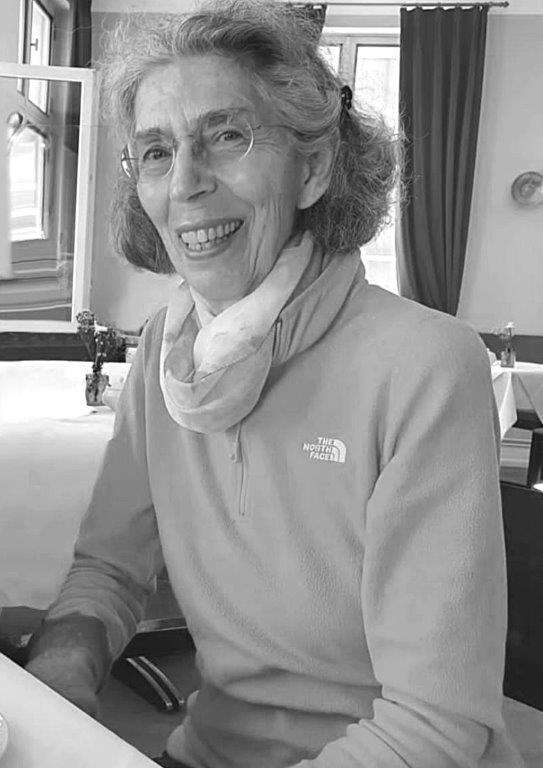
Texts by Alejo Carpentier, such as El amor a la ciudad, or the novels by Leonardo Padura, with Officer Conde, and many others, whispered to me about the wonderful world of Havana and inspired me when it came to photographing. When I discovered the iron bridge over the Almendares River, I naturally remembered the poem by Dulce María Loynaz, which still resonated in my soul.
About the life of fishers in Cuba, there is an impressive documentary, “Huir o resistir.”* I had visited Casablanca and noticed the small fishers’ workshops. But it was not until I had seen the film in Germany that I was able to verify, in my subsequent visits to Casablanca, the reality and harshness of the life they lead and what it means to be a fisher on the island.
Thanks to my two friends, Claudia and Mirta, I had the privilege of taking a look behind the curtain of the city, a license that is not granted to any stranger. My Havana is the score of a symphony: the people, the history, the architecture, the literature and the poetry; music, dance, rhythm, and much more.
Conclusion 1
Havana is for me like a close friend: when things go well for her, I rejoice; when things go bad, I suffer and cry with her. It may sound strange, but no other city has touched my soul so deeply.
Conclusion 2
My photos are details that reflect the history of Havana. Thus I came to the subject of memories, which I have addressed with such intensity. In doing so, I rediscovered my own history through the eyes of a foreign culture.
Show us and comment on some of your photos.
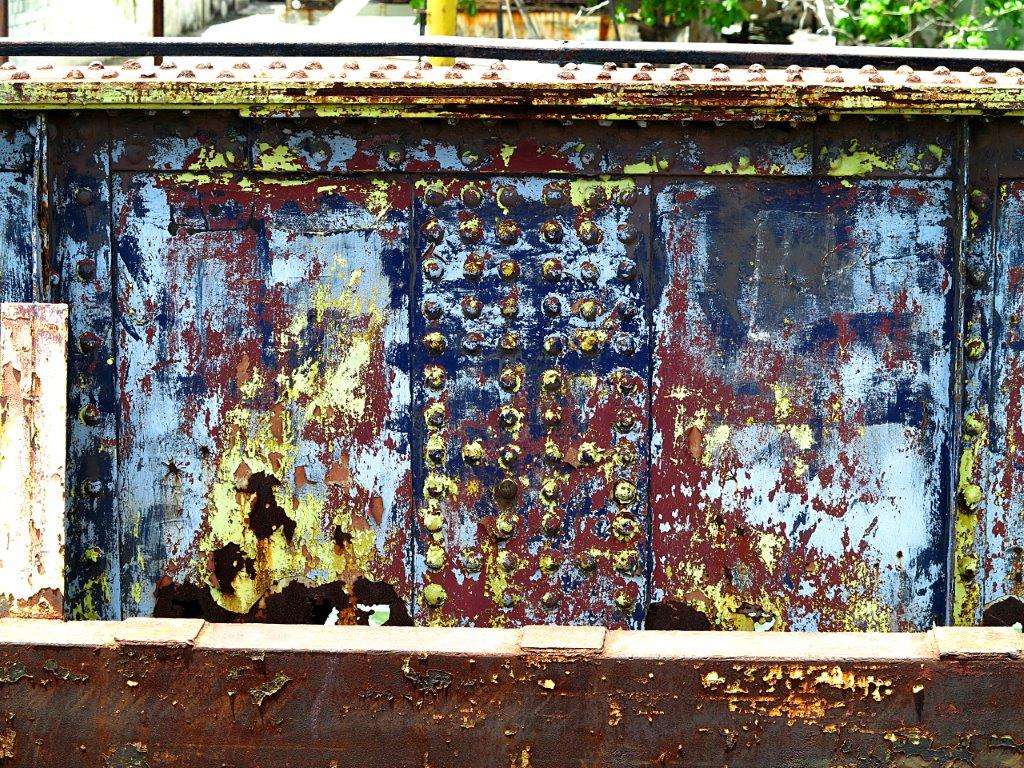
I discovered this beautiful gallery of nature on one of my daily bus trips from Old Havana to the Chévere club, on one of the banks of the Almendares. In those years I was participating in the Vía Danza courses.
During my movements by car or bus, I always kept my eyes wide open, so as not to miss details of the city. This is how I discovered, no matter where I was, small treasures of Havana that very few see.
Sunday mornings are very quiet, so one day I started walking from my friend Claudia’s house to the bridge to photograph it. Each iron plate is an abstract work of art, and none resembles the other. Time has left very visible traces on them, something that has deeply moved me.
I kept those photos for years and waited for the right moment to show part of them. It took me ten years to take them to canvas. So every time I paint, the city comes back to my mind. My stay in Havana and the city itself always remain alive in my memory.
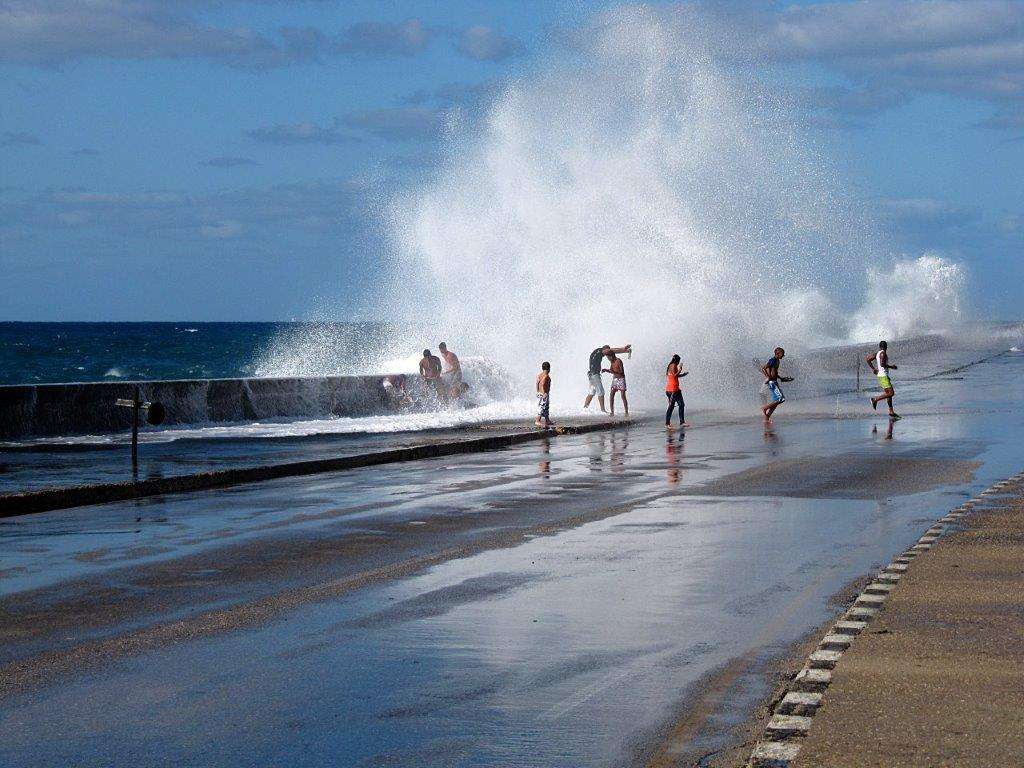
I have lost count of the times I have traveled along the Malecón, from the mouth of the Almendares River to Old Havana. One of my wonders was seeing the children playing with the waves. What a wonderful playground when the waves jump over the wall. A competition is created as to who catches the wave and who challenges it. Much better is when parents who have cars go to the Malecón with their children to also “surf.” What a party! The first time I read about it was in the book Nieve en La Habana: Confesiones de un cubanito, by Carlos Eire. I laughed a lot with the children’s stories and their jokes.
The Malecón is a meeting point for Havanans at any time, a large sofa where one sits down to share. So I always discover something new about it. Even for novelists and poets, the Malecón is a veritable source of bubbling inspiration.
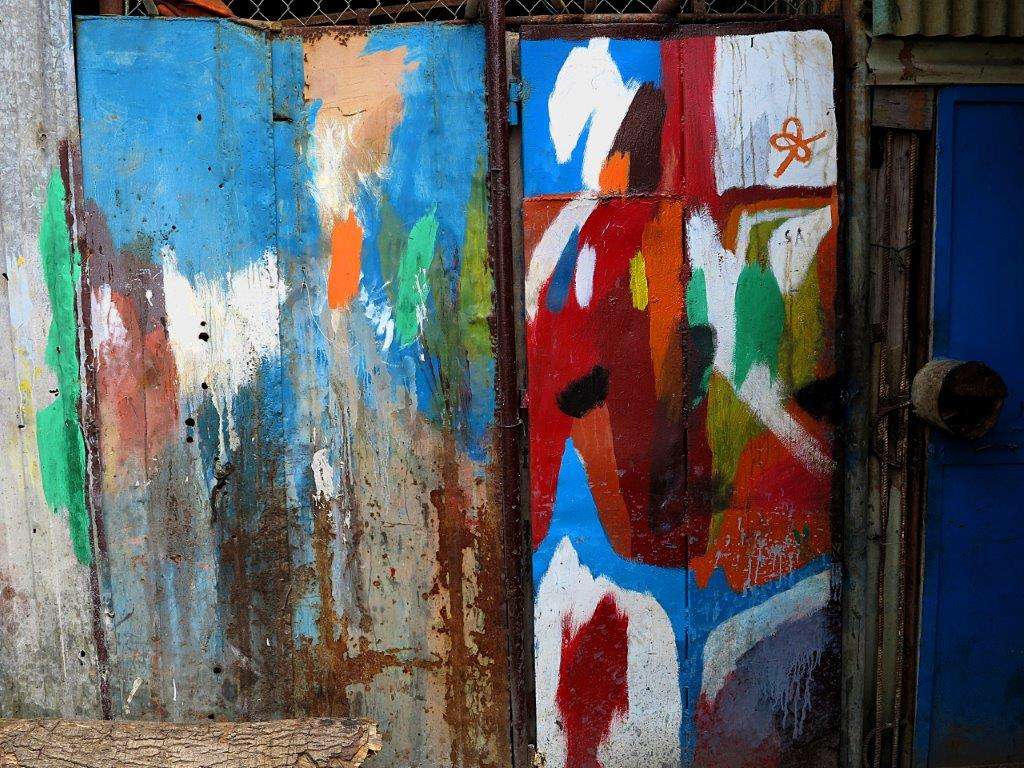
By chance I came to Casablanca. The motorboat was about leave, and my Cuban companion and I were barely able to get on it. Once ashore, we walked along the old rails. Then, with joy, I saw the small metal workshops of the fishers with their colorful plates. What a creative place, with so much everyday art created by strangers.
The kind-hearted guard couldn’t resist my enthusiasm and let us in to take photos. I visited that magical place every time I traveled to Havana.
However, over time the place was reduced in size and now it remains to be seen if, when I return, it still exists. I am a witness to that open-air gallery, and for me it has been a gift to have been able to document it.
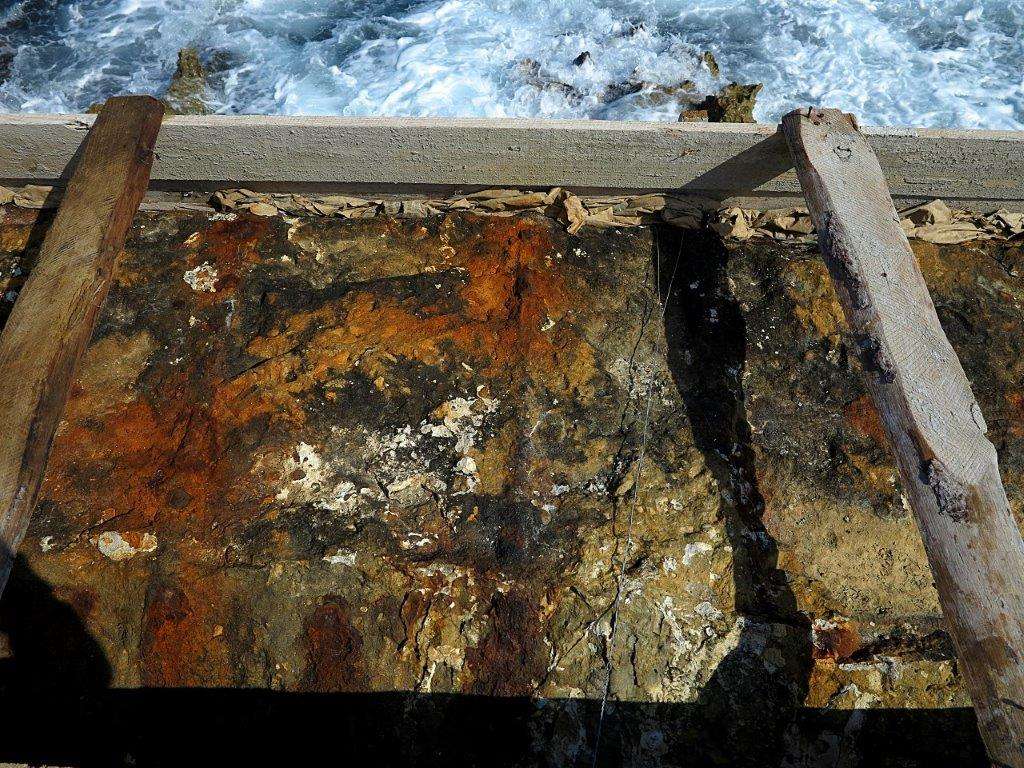
In 2018 I revisited Havana. I was curious if I would find traces of Hurricane Irma passing through the city. Before the arrival of the cyclone, I had followed the religious processions that spread throughout the island.
How much hope, confidence and strength the Cuban people have to entrust themselves to the holy powers and pray for the island to emerge unharmed. That’s why I admire them.
I wanted to go to the Malecón in search of some traces of the devastation, and in a part of the wall I found the last traces. It looked like a painful unhealed wound, which I captured with my camera to remember the event.
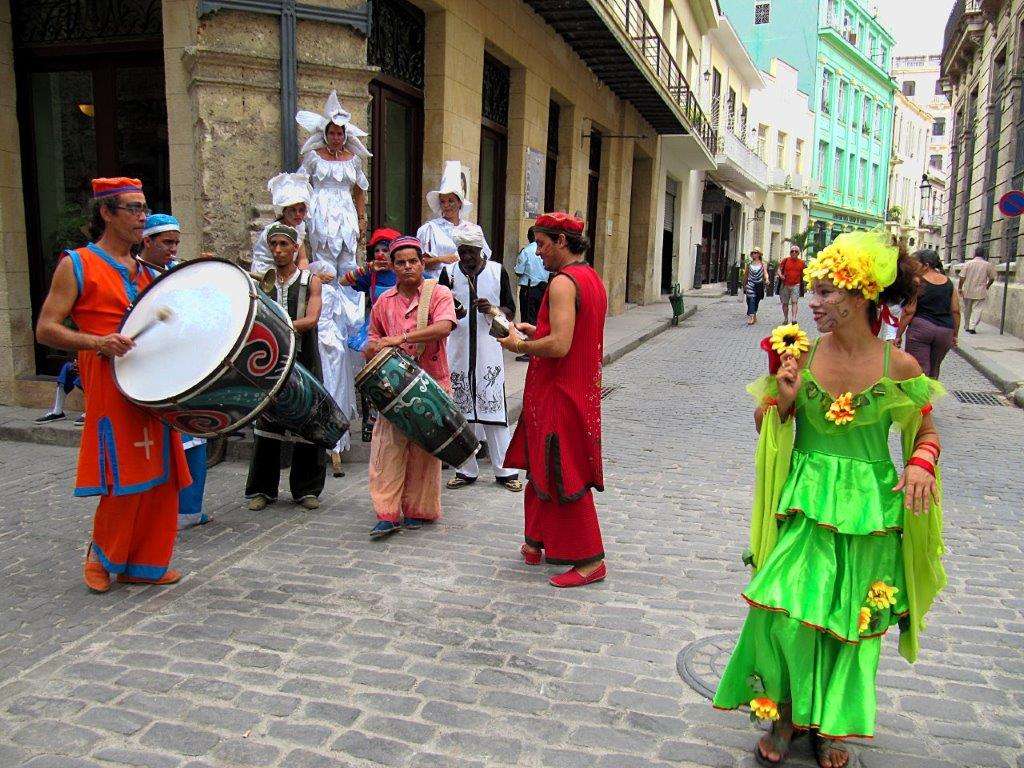
My encounter with the group is something personal. I learned Cuban rhythms, with musician Juan Piñol, in one of those conga drums. A friend of his, from that group, had lent him the instrument for me.
I had met those musicians at Piñol’s wedding, where they gave a joyous spontaneous concert. They began to play with instruments, and then they beat on the chairs, the tables, with spoons, with everything that produced a sound. The rhythm made the atmosphere vibrate. I love remembering those people and that special wedding.
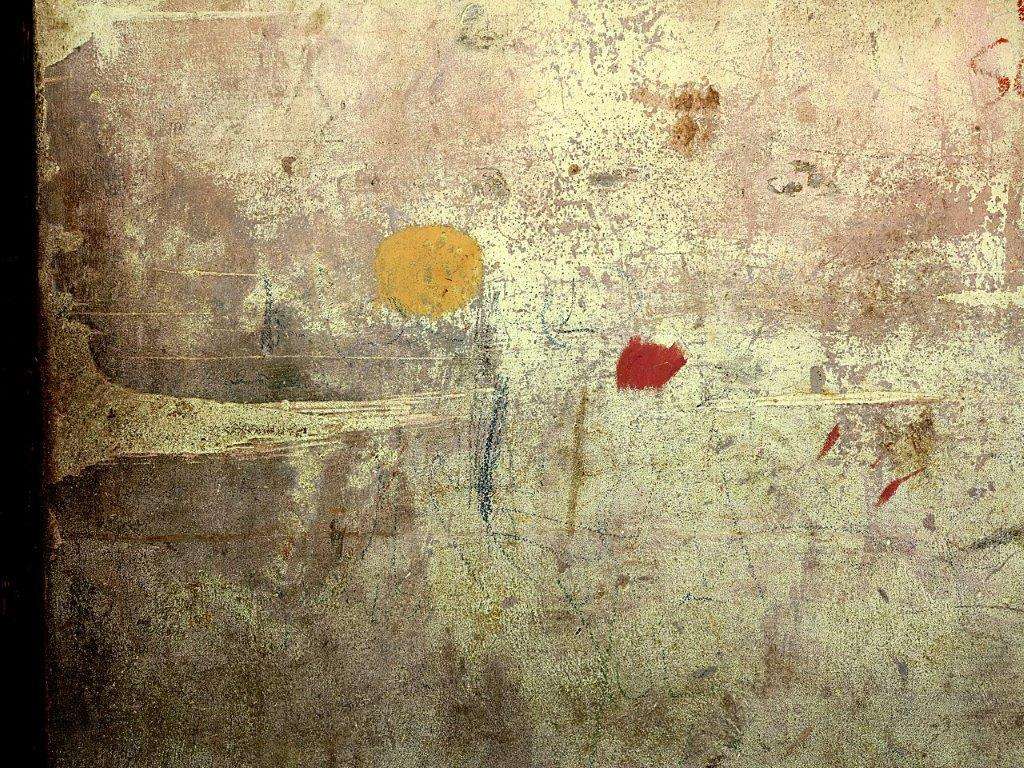
My favorite neighborhood in the city. How many times have I walked up and down its streets and alleys letting myself be carried away by its sound and its rhythm. This orchestration opened my senses to the visual treasures that were displayed before my eyes.
Two insignificant paint splatters on one wall reminded me of Miró’s paintings. Nature, climate and weather are the artists. For me, this is the kind of gift that Havana gives me.
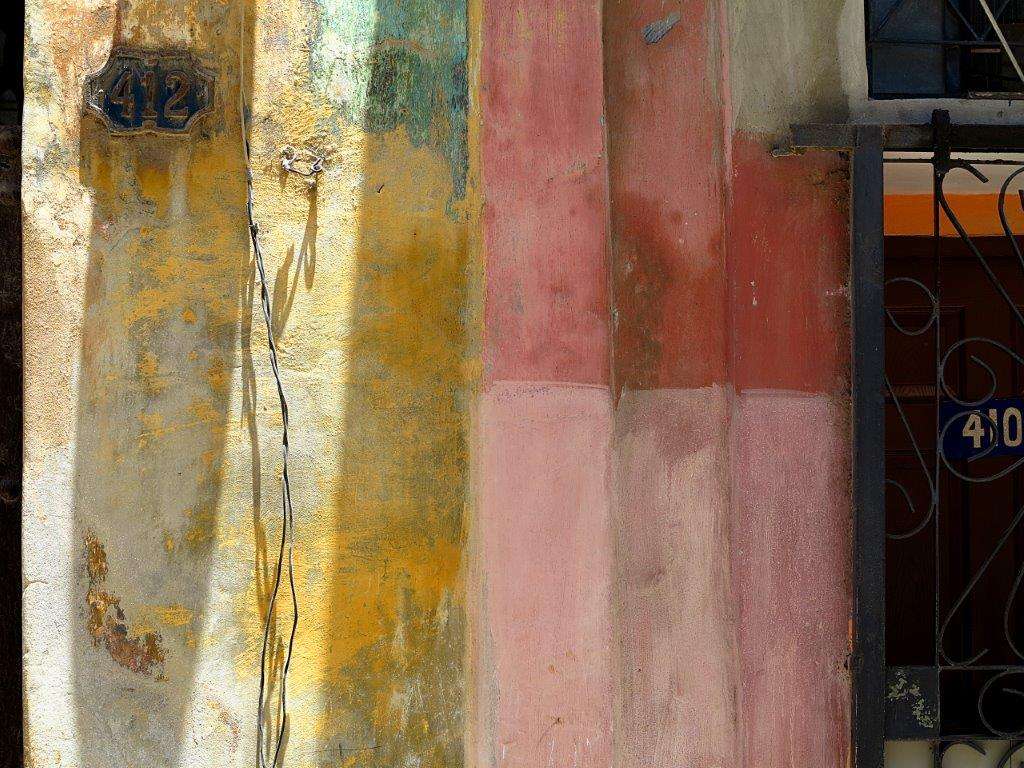
In another of the streets, the work of Mark Rothko revealed itself to me in pink and yellow. My game is to let myself go through the streets, that’s how I make my discoveries with the camera. Also, I never write where I capture the images.
The next time I return to Havana I’ll look for those motifs, which are like surprising friends. I want to know if they remain or if they have disappeared. For me, that’s my Havana.
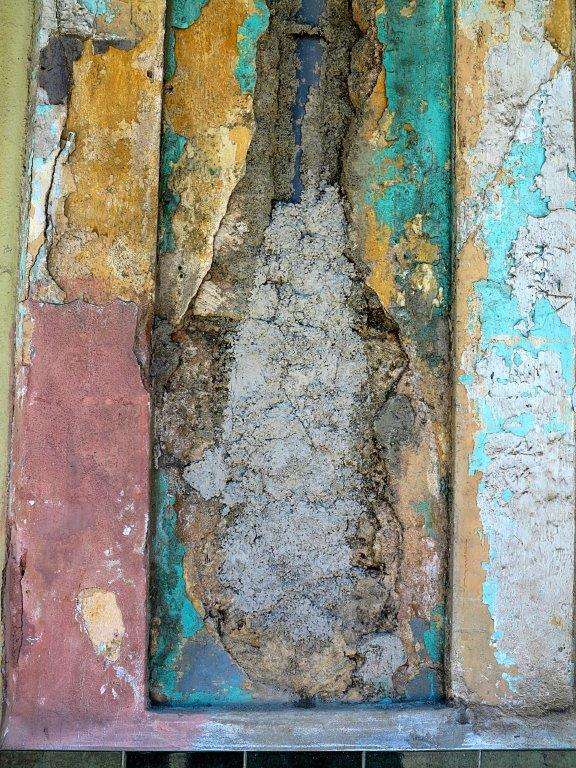
One day I spent the whole afternoon touring the Prado and its surroundings, slowly, as if I were in a museum. I was hoping that the walls would tell me their stories. I stopped, amazed, in front of a fragment of wall; my eyes could hardly believe that I was seeing the heart of Havana. Like a flower, the layers of paint were opening a little, and the history of the city began to sprout, full of events, mourning or festive, that marked past eras.
Soon the music of the city resounded in me with its unmistakable rhythm. I returned to Claudia’s house, drunk with joy, to be able to tell her about a new adventure about her city.
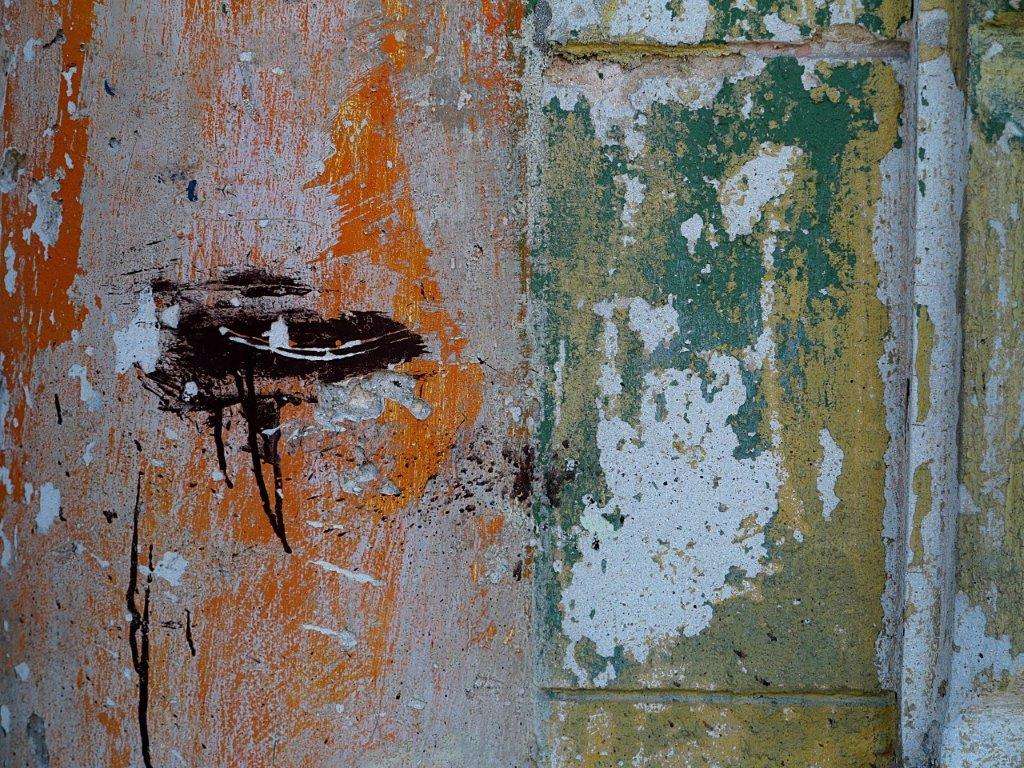
In 2012 I came across this wall fragment. It was one of the many excursions through the city, wandering without a fixed route. Back in Germany, I saw the picture again, which I really liked. It was funny, with its energy and peculiar strokes. That’s why I decided to locate it on my next trip, like someone looking for an old friend, but I couldn’t find it.
In 2014 I resumed my walks, immersing myself in the atmosphere of the city. This time I walked along the Malecón, along the sidewalk of the buildings, with their shadow columns. Suddenly, the graffiti at the foot of one of the columns jumped out at me like a little elf.
What a joy to finally find it! I would have wanted to hug the column and celebrate. The graffiti reminds me of the great French photographer Brassaï (1933-1939), well known in Paris for his series The Language of the Wall.
________________________________________
* ARTE channel documentary: Director, Kim Hopkins, Great Britain, 2018.
Translated from the German: Mirta Peralta.

